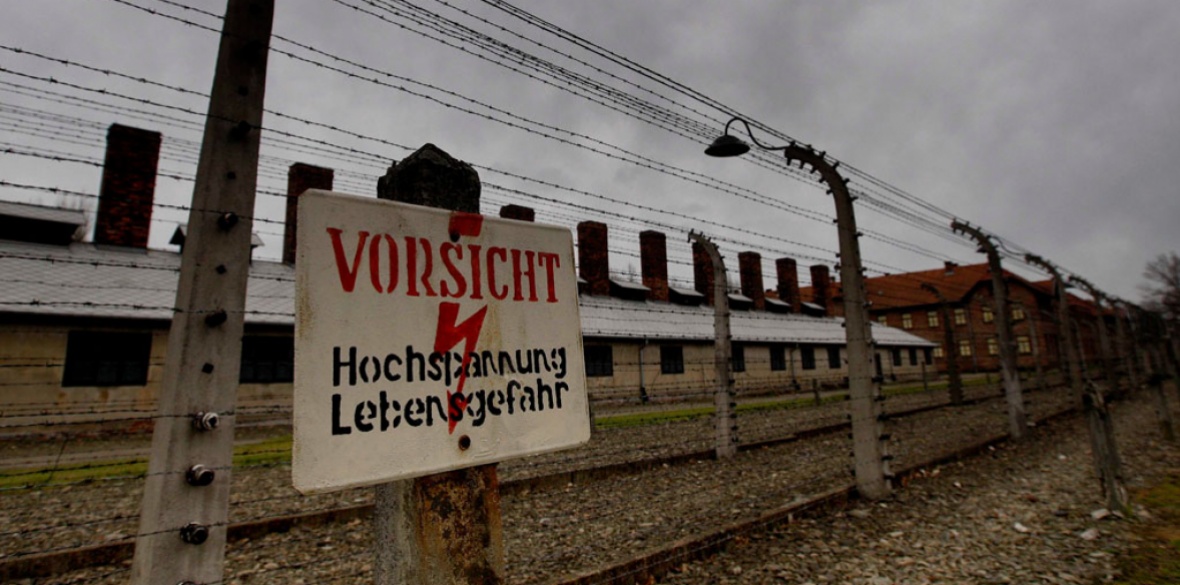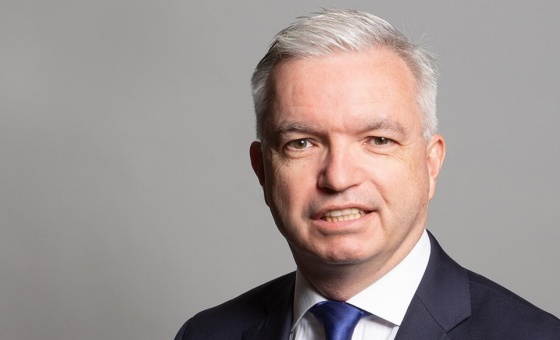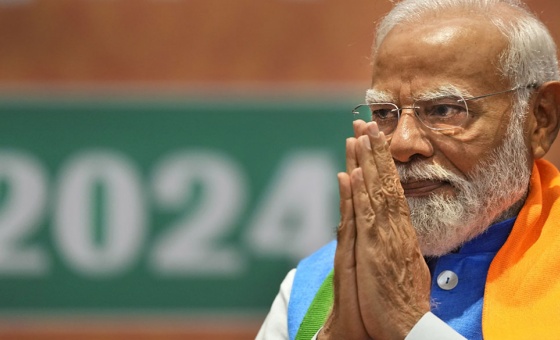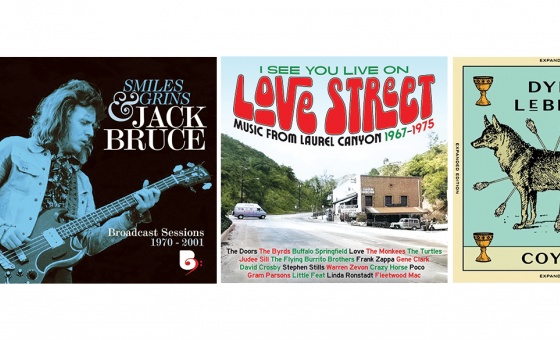This is the last article you can read this month
You can read more article this month
You can read more articles this month
Sorry your limit is up for this month
Reset on:
Please help support the Morning Star by subscribing here
AT THE edge of the former concentration and death camp at Auschwitz is a suburban 1930s villa with a carefully tended garden — the kind of house a well-off middle-class family might aspire to in any European town.
This was the home of Rudolf Hoess, commandant of Auschwitz, who transformed the Polish army barracks there into a huge prison and extermination camp, primarily for the industrialised murder of Jews and Gypsies.
Here Hoess lived with his wife and children, and this is where his fifth child, a daughter, was born — just a few metres from a crematorium where prisoners killed en masse by cyanide gas were incinerated.
This juxtaposition of the ordinary with the unimaginable is the defining conundrum of the Holocaust, articulated so powerfully as “the banality of evil” by Hannah Arendt in her 1963 New Yorker reports on the trial of Adolf Eichmann, the nazi who organised the transportation of Jews to the death camps.
Auschwitz was a vast industrial complex. It included factories where slave labourers were literally worked to death, sites where “doctors” carried out devastating and often fatal experiments on inmates, and acres of bleak barracks that were overcrowded holding pens for prisoners before they were exterminated.
For this system to function, ordinary people working in offices devised timetables for a rail network that transported Jews in livestock trucks from every nazi-occupied country to “the ramp” — the platform in Auschwitz where doctors selected them to live or die.
Members of the camp staff organised slave labourers to collect, sort and store the victims’ possessions, from suitcases, jewellery, money and clothes to kitchen equipment and prosthetic limbs.
These were then transported to Germany to be sold or recycled. Clerks meticulously documented the human cargo and their goods.
Engineers designed gas chambers so efficient that when they were crammed full, the prisoners’ own body heat activated cyanide pellets, killing 200 people within 20 minutes.
Guards chose inmates to extract gold teeth from the bodies before they were burnt in the crematoria, and farmers used the ashes as fertiliser.
The nazis opened the camp in 1940 near the historic Polish town of Oswiecim, which they renamed Auschwitz.
The initial inmates were Polish political prisoners but these soon exceeded the capacity of the camp, and in 1941 building started on Auschwitz II, or Birkenau, 3km away.
This became the largest of the death camps, designed primarily to fulfil the nazi ambition to eliminate the Jews and Gypsies entirely.
Over 900,000 Jews and 21,000 Roma and Sinti died there, along with around 100,000 others, including non-Jewish Poles and Soviet prisoners of war.
Every year, Unite Against Fascism organises a four-day educational trip to Krakow and Auschwitz for anti-racists and anti-fascists.
This year, 60 people were on the tour, most of them trade unionists from Unite, Unison, PCS and the FBU; a few, including myself, were members of the Jewish Socialists’ Group; and there were two groups of sixth form students with their teachers, as well as some unaffiliated individuals.
The itinerary was demanding. Participants were learning not just about the death camp itself, but about the political and historical context, how the nazis segregated and dehumanised the Jews and the Roma, and also about the anti-nazi resistance.
The opening talk was about life in Poland before the nazi invasion in September 1939. In the 1930s the Jewish population of the country was 3.3 million, many of them involved in politics and trade unions, and most living in the cities, which at that time were multicultural and multilingual.
Under nazi occupation, the Jews were herded into overcrowded ghettoes where starvation was used as a weapon to weaken the population and undermine any attempts to escape or resist.
In summer 1942 the deportations started, with thousands being taken every day to death camps. Despite the extreme suffering, there was resistance which took many forms.
We heard about the most famous act of resistance, the Warsaw Ghetto uprising, led mainly by young people with makeshift weapons, who held out for three weeks against the nazi war machine, until, in May 1943, the ghetto was torched and reduced to a four-metre-high pile of rubble.
A guided walk took us through Kazimierz, the centuries-old centre of Jewish life in Krakow, and then across the River Vistula where in 1941 the Jews were marched into the ghetto, crowding 24,000 people into buildings that had formerly accommodated 3,000, then sealing them into the area with walls built to resemble Jewish gravestones.
We saw buildings that had housed Jewish and nazi organisations: the orphanage where the staff were given the option to save their own lives but instead accompanied the children when they were deported to the death camp at Belzec; the children’s daycare centre, where German soldiers threw babies out of the windows; the employment office, where people queued, desperately hoping that a chance to work would keep them alive.
Walking those streets on a freezing cold day helped us imagine the shattering of the 1,000-year history, culture, language and way of life of the Jews in Poland.
This gave us the context for what we saw the following day at Auschwitz itself, led by two brilliant Polish guides.
The original camp, Auschwitz I, is almost completely intact, consisting of solid, mundane buildings, whose ordinariness is a shocking contrast to the murderous cruelty that was perpetrated within them.
They contain displays of items salvaged after the Red Army arrived to liberate the camp in January 1945: typed receipts documenting what the nazis stole from their victims, and glass cases containing what remained of those items at the end of the war — piles of human hair, shoes, kitchen utensils, prosthetic limbs, and carefully labelled suitcases.
There are also photos, most taken by the nazis as a record of their destructive work, plus maps and explanatory panels documenting the transports, numbers and fate of the prisoners.
We then travelled the 3km to Auschwitz II-Birkenau, the extermination camp, where most of the victims were Jews.
Huge and bleak, most of the buildings are gone, leaving only the chimneys of the once crowded, rat-infested, disease-ridden barracks — just the skeleton of a vast death machine.
This was the sole destination of the railway lines whose image has come to symbolise the final solution.
There, near the ruins of one of the crematoria that the nazis tried to destroy before the Soviet Army arrived, we sang The Partisans’ Song, an anthem often sung at Holocaust commemorations.
The words are in Yiddish, the language of most of the victims, and were written in 1943 by Hirsh Glik, a young Jewish poet in the Vilna (Vilnius) Ghetto when he heard about the uprising in Warsaw.
The song is a defiant assertion of hope in the face of terror, and of the need to fight for the right to live. The song starts: “Zog nit keynol az du geyst dem letstn veg,” (Never say that you are walking the final road) and ends with the words: “Mir zaynen do!” (We are here!).
We explained the song to our guide, with its message derived from the ideology of the Jewish socialist Bund, that wherever we live, that’s where we belong.
When we said the words: “That’s where we belong,” she burst into tears and hugged us.
The following day a Polish anti-fascist activist told us about the current political situation in Poland, where both the far right and the left have made electoral gains; where Pride marches are attacked but where anti-fascists are mobilising to challenge the regular nationalist marches that have tacit or overt government support.
We also heard the story of the late Esther Brunstein, a survivor of Auschwitz, who devoted her latter years to campaigning against racism and fascism, and talking to school students all over Britain.
The participants said they would share their experiences in their workplaces, with their families, and in their unions.
Des, a Unite Voluntary Sector official from Edinburgh, spoke at a Remembrance Day event in his village earlier this month, and described standing at the very spot in Auschwitz where the life and death selections were made.
He said: “Amongst all the people we have to remember today we should not forget the millions of victims of the nazis’ racist and anti-semitic ideology.”
The school students have talked about the trip in depth to their families. One of them, Emilja, from Lithuania, said: “It opened my eyes about fascism and how people fighting against it are making a difference … Knowing what the end could look like makes me think how it’s so important that it must never happen again.”
Another student, Awayna, summed up what most participants took home from the trip, when she described the relevance for us today of the quote we heard from Mein Kampf, in which Hitler said: “You should have stopped me when the movement was small.”
Anyone who is interested in participating in next year’s Unite Against Fascism educational tour to Krakow and Auschwitz should contact [email protected].











